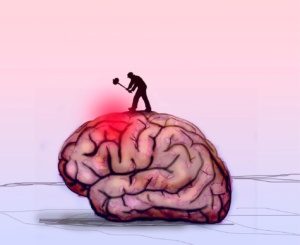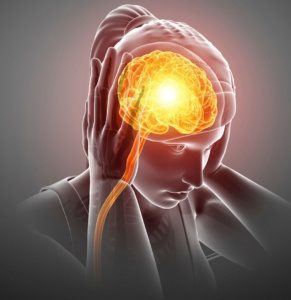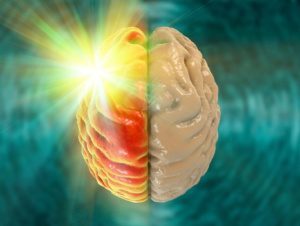Endometriosis and Migraine: What is the Connection Between the Two Conditions?
 Endometriosis and Migraine: Co-Occurrence and Beyond: In many cases, both endometriosis and migraines affect women. Endometriosis, one of the most prevalent gynecological conditions, primarily affects women, with rare exceptions. Migraine, on the other hand, also disproportionately impacts women over men [1]. However, recent studies reveal that the parallels between endometriosis and migraine run deeper. This article provides essential insights into the relationship between these two conditions, covering:
Endometriosis and Migraine: Co-Occurrence and Beyond: In many cases, both endometriosis and migraines affect women. Endometriosis, one of the most prevalent gynecological conditions, primarily affects women, with rare exceptions. Migraine, on the other hand, also disproportionately impacts women over men [1]. However, recent studies reveal that the parallels between endometriosis and migraine run deeper. This article provides essential insights into the relationship between these two conditions, covering:
- Background Information on Endometriosis
- Background Information on Migraine
- Exploring the Causes of Interaction between Endometriosis and Migraine
- Implications Arising from these Discoveries
What is Endometriosis?
Endometriosis, often referred to as ‘endo,’ is a gynecological condition primarily active during the reproductive phase of a woman’s life [2]. Typically, its symptoms commence around the onset of the first menstrual period and persist until the beginning of menopause. In Germany, approximately five to fifteen percent of young girls and women are affected by endometriosis [3].
This benign yet chronic condition manifests near the uterus, where tissue resembling the endometrium—the uterine lining—abnormally grows outside the uterus and within the abdominal cavity. In some instances, endometriosis can extend to distant organs, such as the intestines, urinary bladder, liver, and lungs [3, 4]. The endometrial tissue that develops outside the uterus is known as an ‘endometrial lesion.’ Furthermore, endometriosis is categorized based on the growth pattern of these lesions, which can either be superficial or deeply infiltrating, extending significantly into affected organs [2].
As with the endometrium within the uterus, these endometrial lesions are subject to the female menstrual cycle. The symptoms experienced vary depending on which organs are affected and the nature of the adhesions. These symptoms may encompass menstrual irregularities, fertility challenges, digestive issues, back pain, and headaches [3, 4, 5].
What is Migraine?

Migraine is classified as a headache disorder and is one of the most prevalent neurological conditions [Source 6]. Typically, migraine headaches manifest on one side of the head and are characterized by throbbing pain. Additional symptoms often accompany migraines, including nausea, vomiting, and heightened sensitivity to light and noise. A distinct subtype of this headache disorder is ‘migraine with aura,’ where individuals experience visual disturbances like flashes of light and zigzag patterns, often preceding the headache itself.
Migraine can impact both genders, but it predominantly affects women. Ongoing research suggests that women are five times more likely to experience migraines than men [1].
Is There a Connection Between Endometriosis and Migraine?

The precise causes of endometriosis development remain elusive, making it challenging to establish a direct link between symptoms unrelated to the areas affected by endometrial lesions and endometriosis itself. This ambiguity also extends to headaches, particularly migraines, frequently experienced by women with endometriosis [7].
Recent studies, however, have shed light on the connection between endometriosis and migraine [8, 5]. Research has revealed that women with endometriosis are at double the risk of experiencing migraines compared to those without the condition. Additionally, it has been observed that migraine symptoms tend to emerge earlier, around 16 to 17 years old, for women with endometriosis compared to control groups [9]. Based on current knowledge, the severity of endometriosis does not appear to influence the severity of migraine attacks directly. Nonetheless, women with a subtype known as ‘deep infiltrating endometriosis’ seem more susceptible to migraines than those with superficial endometrial lesions [3].
Why Do Endometriosis and Migraine Frequently Co-Occur?
Although the precise causes of endometriosis development remain unclear, there are notable parallels between endometriosis and migraine, particularly in factors contributing to the onset of these conditions.
 Early onset of the first menstrual period is a shared risk factor for endometriosis and migraine [10]. Hormones governing the menstrual cycle have long been implicated in the potential link between the two conditions. This is further supported by the phenomenon of ‘cycle-dependent migraine,’ where individuals experiencing migraines, whether or not they have endometriosis, share an increased incidence of headaches in correlation with their menstrual cycles [11]. In this context, a rapid drop in estradiol levels appears to trigger cycle-dependent migraine attacks.
Early onset of the first menstrual period is a shared risk factor for endometriosis and migraine [10]. Hormones governing the menstrual cycle have long been implicated in the potential link between the two conditions. This is further supported by the phenomenon of ‘cycle-dependent migraine,’ where individuals experiencing migraines, whether or not they have endometriosis, share an increased incidence of headaches in correlation with their menstrual cycles [11]. In this context, a rapid drop in estradiol levels appears to trigger cycle-dependent migraine attacks.
A few years ago, a study [13] identified common genetic influencing factors for migraine and endometriosis, indicating that specific genetic risk factors can contribute to the development of both conditions. This suggests that they share similar triggers, often leading to co-occurrence.
A recent study [12] delved deeper into the shared mechanisms behind endometriosis and migraine development. The study focused on the nerve messenger CGRP, which plays a significant role in both conditions, causing vessel dilation, pain, and nerve-related inflammation. Researchers mainly investigated how the menstrual cycle influences CGRP levels. Initial findings confirm the suspicion of a clear cyclical correlation between CGRP levels and both migraine and endometriosis.
What Do These Study Findings Imply?
The recent research which has unveiled a connection between endometriosis and migraine, along with a better understanding of the triggering factors, holds several practical implications:
- Validation of Physical Basis: These findings challenge the previous notion that cycle-dependent migraines and migraines associated with endometriosis had solely psychological causes, affirming that there is a physical basis for these conditions.
- Targeted Treatment: As the links between endometriosis and migraine become clearer, developing more precise and effective treatment approaches with reduced side effects becomes increasingly feasible.
- Hormonal Contraception Considerations: Women experiencing migraine with aura should avoid combined contraceptives (birth control pills). Progestin mono-contraceptives are a more suitable option, provided there are no additional cardiovascular risk factors. Medication discontinuation may be necessary if migraines persist during use [Source 14].
- Proactive Measures: Given the often observed association between migraine and endometriosis, these two conditions can serve as an early warning system for each other. Recognizing symptoms of one state when the other is present can expedite diagnosis due to the knowledge of their interaction.
Summary:
While endometriosis and migraine may appear as distinct medical conditions initially, they frequently exhibit a connection. Endometriosis can manifest with diverse symptoms, and it is not uncommon for women with endometriosis to also experience migraines. Multiple studies have indicated that both conditions are influenced by fluctuations in hormone levels during the female menstrual cycle.
References
- https://www.aerzteblatt.de/nachrichten/103830/Migraene-trifft-Frauen-fast-fuenfmal-so-haeufig-wie-Maenner (abgerufen; 17. Juli 2021)
- gyne, Ausgabe 05/2016: Die Rolle des Peritoneums in der Schmerzpathogenese des Endometriose, Prof. Dr. Sylvia Mechsner
- Dtsch Arztebl Int 2010; 107(25): 446-55; DOI: 10.3238/arztebl.2010.0446;
Diagnose und Therapie der tief-infiltrierenden Endometriose, Halis, Gülden; Mechsner, Sylvia; Ebert, Andreas D. - Endometriose – Entstehung, Diagnose, Verlauf, Therapie; Steck, Felberbaum, Küpker, Brucker, Finas; Springer-Verlag
- https://journals.sagepub.com/doi/full/10.1177/2284026518818975 (abgerufen; 17. Juli 2021)
- https://www.aerzteblatt.de/archiv/200308/Migraene-Prophylaxe-und-Therapie (abgerufen; 17. Juli 2021)
- https://www.medwiss.de/2020/12/23/treten-migraene-und-endometriose-haeufig-gemeinsam-auf/ (abgerufen; 17. Juli 2021)
- https://pubmed.ncbi.nlm.nih.gov/31810400/ (abgerufen; 17. Juli 2021)
- https://www.wissenschaft.de/umwelt-natur/gebaermutterwucherungen-bereiten-frauen-kopfschmerzen/ (abgerufen; 17. Juli 2021)
- https://www.ncbi.nlm.nih.gov/pmc/articles/PMC3307779/ (abgerufen; 17. Juli 2021)
- https://www.aerzteblatt.de/archiv/118997/Migraene-Patientinnen-Differenzierte-Auswahl-des-Kontrazeptivums (abgerufen; 17. Juli 2021)
- https://endo-dialog.de/endometriose-und-migraene-studienergebnisse-werden-in-kuerze-publiziert/ (abgerufen; 17. Juli 2021)
- https://pubmed.ncbi.nlm.nih.gov/18636479/ (abgerufen am 19. Juli 2021)
- https://www.awmf.org/uploads/tx_szleitlinien/015-015l_S3_Hormonelle_Empfaengnisverhuetung_2020-09.pdf (abgerufen am 19. Juli 2021)
- Endometriosis and Migraine: What is the Connection Between the Two Conditions? - 8. October 2023
- Endometriosis and Migraine: What is the Connection Between the Two Conditions? - 8. October 2023
- Can I Inherit Endometriosis? - 7. October 2023
